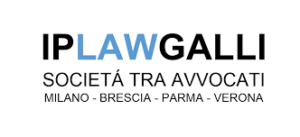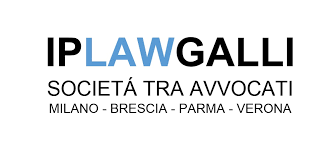
- On 1st July 2019, Regulation no. 2019/933/EU entered into force, amending the rules governing SPC, so allowing the production of active ingredients still covered by a SPC for exporting to countries where patent or complementary protection does not exist or has already expired and (more limitedly) for their storage with a view to commercialize them immediately after the expiry of the certificate.
This Regulation, to be understood and evaluated, requires to be included in the overall regulation of the two institutions that are considered in this regard. Namely, on the one hand that of supplementary protection which, in the field of pharmaceuticals and plant protection products, may extend to the exclusivity deriving from the granting of a patent under certain conditions, and, on the other hand, that of the limitations of this exclusivity related to the purpose of producing and marketing generic drugs. In fact, the above two institutes are more closely linked to each other than it might appear, and above all on a historical level, given the substantial contextuality of their introduction, but more so in the relevant ratio legis, which appears to be complementary in several ways. Precisely, the consideration of this ratio has imposed a concurrently oriented reading of current regulations of SPCs, which has progressively established itself in case law, and primarily in that of the European Court of Justice, which has stressed on several occasions that the grant of an SPC is only allowed to compensate for any delay in the marketing of the first pharmaceutical composition including the active ingredient which “constitutes the core inventive advance that is the subject of the basic patent” (ECJ, 12th December 2013, case C-443/12, Actavis, which clarified the principle already expressed in ECJ, 11th November 2010, case C-229/09, Hogan Lovells International). Such ratio also appears to be consistent with the introduction of the SPC Waiver, which meets the same requirements and represents, from a legal point of view, rather than an exception, a configuration of the scope of protection of SPCs corresponding to the aims of the institution and such as to identify a balance between exclusivity and competition, whose research constitutes a constant action by the European legislator on patents and, more generally, on IP rights.
Indeed, the new regulation introduced finds a specific precedent in the rule through which the Italian legislator tried to overcome the unequal treatment between certificates granted under the 1991 (old) Italian law, which preceded the entry into force of Regulation No. 1768/92/EEC, and certificates granted under the Regulation, with the corollary that, for products covered by the former (which could last up to 18 years), exclusivity in Italy lasted much longer than in the other countries of the EU (where for the same products only the certificates granted under the Regulation existed), which represented a heavy burden for companies operating in Italy. Article 3 of Legislative Decree no. 63 of 15 April 2002, later converted with amendments into Law no. 115 of 15 June 2002, had introduced a procedure of “voluntary assisted license” for the production, in the presence of a CPC, of the active ingredient intended for export “to countries in which patent protection and certificate complementary protection does not exist, has expired or in which the export of the active substance does not constitute an infringement of the relevant patent in accordance with the regulations in force in the countries of destination“. Although the latter was defined as “voluntary”, the refusal to grant such a license for production intended for export was configured as potentially abusive under the Antitrust profile as a form of abuse of patent law, having also been invoked in this regard the application of American patent misuse case law.
So, even with all the limitations of an emergency decree invoked to try to find a compromise solution that mediated between the various needs (and the different lobbies) of originators and producers of bulk active ingredients, so as to remedy the unfortunate choice of introducing in 1991 the “national” CPC, this law had two undoubted merits. On the one hand, it introduced a mechanism (precisely the “voluntary assisted license”) which represented, even if in its early stages, a first case of SPC Waiver. On the other hand, it brought up for the first time the issue of the relationship between the extension of protection resulting from the granting of SPCs and CPCs and powers granted to independent producers of active ingredients while maintaining this protection and notwithstanding its contents.
- By the law of 1991, Italy also partly anticipated what was then provided by Directive 2004/27/EC, amending Directive 2001/83/EEC, also known as the Community Code Relating to Medicinal Products, given that it also provided for the possibility for entities wishing to place on the market a generic drug corresponding to that covered by a complementary certificate to start the procedures for obtaining the relevant marketing authorisation one year before the expiry of the SPC. More generally in Italy, even before these revisions of the Directive, with specific reference to preliminary activities (not to production, but) to obtaining the marketing authorisation (AIC), it was considered doubtful that this type of use could at the very least be qualified as the implementation of the patent. The fact that this activity could not be called implementation (and therefore, hypothetically, counterfeiting) had indeed been confirmed precisely in the introduction of the supplementary protection certificate, as it was underlined that the (partial) ‘recovery’ of the time taken by the patent holder to achieve registration for his or her specialty through the complementary certificate seems to assume that the administrative procedures necessary to obtain the health record and the formalities connected to them – including the experiments requested by the authorities in charge of the pharmaceutical sector – are not considered by the legislator as embodiments of the invention itself, but as simple preparatory activities in view of its use.
Outside Italy, the results of the above system, however, led the parties who wished to obtain a marketing authorisation (MA) in Europe for a generic drug prior to the expiry of the corresponding SPC – so as to be ready to place it on the market when it expired, without having to wait longer to produce the samples, to submit them to bioequivalence trials and obtain the MA, thus losing out on months of marketing (i.e. the so-called “Bridgehead” period) – to produce the samples and carry out the experiments in countries outside the European Union where there were no SPCs in force and the patent had already expired. To avoid the consequent disadvantage for European companies, Directive 2004/27/EC introduced the express provision as a result of which today across Europe, not only is the submission of an application for marketing authorisation for a generic drug still covered by another patent or SPC undisputed, but also the implementation of the necessary bioequivalence experiments and the production and import of the relevant samples are allowed freely even prior to the expiry of the relevant patent or complementary protection.
Regulation no. 2019/933/EU responds to the same need and therefore represents the completion of the regulatory intervention of 2004, since it allows not only the activities necessary to obtain the AIC, but also the production of the drugs that the genericist must have in advance of the expiry of the certificate to enter the market immediately after it: also in this case, the aim pursued by the legislator is in fact to avoid that genericists are forced to have recourse to production outside the countries where a SPC is in force, thus penalising European manufacturers without this entailing a substantial advantage for the holder of the certificate.
Therefore, the new rule seems to affect the interpretation of the issue of whether the exemption introduced by Directive no. 2004/27/CE operates only in favor of the person who intends to apply in his own name for an AIC, or also in favor of those who produce on his behalf the quantities of the active substance covered by the SPC. In the latter sense, the Italian provision which implemented the 2004 Directive is already interpreted in that sense and which seems to state specifically that the relevant exception is objectively valid in relation to the destination of the active ingredient to the procedure for the granting of the AIC, rather than operating for the exclusive benefit of the entities applying for an AIC.
- It can therefore be concluded that, beyond the economic reasons underlying the Commission proposal, also from a strictly legal point of view, the incorporating amendments to the current legislation on SPC -which also allow production (without the consent of the holder) in Europe for export to countries where this protection does not exist or has expired – are suggested by reasons of systematic coherence of the discipline.
A pro-competitive reading of the provision that gives patent holders in the pharmaceutical sector a prolonged protection requires in fact to limit their scope to what is necessary to meet the need for compensation underlying this extension, without imposing further limitations on independent producers. The above requirement – and therefore the ratio of the protection extension obtained through the release of the SPC, ratio in respect of which, as the European Court of Justice has pointed out, the contents of the protection must also be coherent – is strictly linked to the need to compensate the delay in the entry into the European markets of the (first) pharmaceutical product that is implemented of what constitutes the “body” of the basic patent’s inventive step; a delay due precisely to regulatory procedures which, in the pharmaceutical sector, make this entry in Europe as a rule, farther than in other economic sectors.
At least in Italy, indeed, even before the latter regulatory intervention (and even now, for earlier SPCs to which it does not apply) it could be thought to leverage the possible competitive abuse of the refusal to grant a license on terms fair for production destined for export to countries where complementary protection does not exist or has expired.
Cesare Galli


